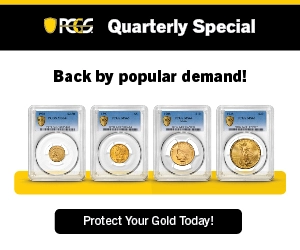By Jesse Kraft for American Numismatic Society (ANS) ……
This past week, between December 1 and 5, the Third International Convention of Historians and Numismatists (Cartagena MMXXI) gathered in Cartagena de Indias, Colombia.
Hosted by the Colombian Numismatic Foundation, the event featured 28 in-person speakers and an additional 23 virtual presentations. The event included Latin American numismatic luminaries such as Jorge Baccera León of Colombia; Jorge Proctor of Panama/Florida; Hilton Lucio of Brazil; Eduardo Dargent of Perú; and so many more. There were representatives from Argentina, Aruba, Bolivia, Brazil, Canada, Chile, Colombia, Costa Rica, Cuba, Dominican Republic, Ecuador, El Salvador, Guatemala, Honduras, Mexico, Nicaragua, Panama, Paraguay, Peru, Spain, the United States, Uruguay, and Venezuela. Similarly, the event was sponsored by many different organizations, several of whom are very well known even to those who may not be familiar with Latin American numismatics—such as Coin World, Heritage Auctions, PCGS, and Stack’s Bowers.
While there were a few pre-conference events (guided tours, etc.), for me, the conference opened on the evening of December 1 with a ceremony at the Palacio de la Proclamación, the freshly-restored palace where Cartagena’s independence from Spain was declared on November 11, 1811 (Fig. 2).
The palace is located deep within the fortified walls of the old Spanish fort. After the ceremony, we wined, dined, and were entertained by traditional folkloric music and dance, witnessed the launching of a commemorative postal issue, as well as the donation of an important decoration to the Naval Museum of Cartagena by Richard Caccione. There were over 140 individuals in attendance that evening.
The following four days were filled with the most up-to-date research on Latin American numismatics. The conference itself was held in a beautiful downtown resort located along the shores of the Caribbean, the Intercontinental Cartagena de Indias. The large stage and dual screens allowed for all in attendance to see everything (Fig. 3).
Furthermore, for the few of us who are not absolutely fluent in Spanish, two professional translators provided their services through a set of headphones. The level of research, the willingness that everyone had to share their work (even unpublished material), and the overall familial feeling was something that should have come as no surprise but still made me reflect on how we can all benefit from such incredible comradery.
In the hallway just outside of the conference doors, Colombian artist Jorge Juan Osorio Orozco offered some of his pieces. His mixed-media works consist of genuine banknotes and colored pencil, where he would extend the vignette well beyond the confines of the original note with the original source of the design. For instance, Orozco used a lithograph of the Liberator, Simón Bolívar, as published by the Ramírez Brothers in the late 19th century to extend the bust of a 2,000 Colombian peso note (Fig. 4).
The results are nothing short of impressive and intriguing, as each piece was beautifully framed and matted. Orozco must have had 50 works there at the beginning of the conference, and far fewer by the last day. For those interested, he can be found on all the major social media outlets and does ship internationally.
Cartagena, in particular, was chosen for this year’s conference to celebrate the 400th anniversary of the first coinage struck in the city and, as a result, all of present-day Colombia (at the time, a part of the Nueva Reino de Granada). This fact itself is a recent discovery. For decades, researchers believed that the first coinage struck in Cartagena were cob coins (known as macuquinas in Latin America) struck in gold in 1622, though the earliest-known dated pieces were minted in 1625. Recent discoveries, however, revealed that Alonso Turrillo de Yebra struck 1,600 silver macuquinas dated 1621 and shipped them to Spain for inspection by King Philip III. As fate may have it, the coins were loaded onto what became one of the most famous Spanish galleon shipwrecks of all time, the Atocha, which sank off the coast of Florida in a hurricane in 1622. Since the discovery of the wreck in 1985, only nine (9) of these 1621 macuquinas from Cartagena have been excavated (Fig. 5). Some have readable dates, some don’t–but they all come from the same set of dies. The rest are still presumably at the bottom of the seafloor.
Again, I cannot overstate the level of research at this conference, as well as everyone’s willingness to share both published and unpublished works. I am happy to have been invited not only to this conference but also into this group. Furthermore, that the ANS is beginning to reinsert itself back into the mainstream of Latin American numismatics (Fig. 6).
Even without our presence over the past few decades, many from the region are already well acquainted with the ANS collection (Fig. 7).
While there are many people that I met over the past week (far too many to name in this post), I would like to especially thank Richard Caccione, a Bronx native who has spent a considerable amount of time in Latin America, currently lives in Perú, and is a noted expert on Peruvian banknotes. Without his unsolicited email to me and his insistence that the ANS have a representative present at the Congress, none of this would have been possible. I very much look forward to the next International Convention of Historians and Numismatists, wherever the organizers decide to hold it.
* * *
